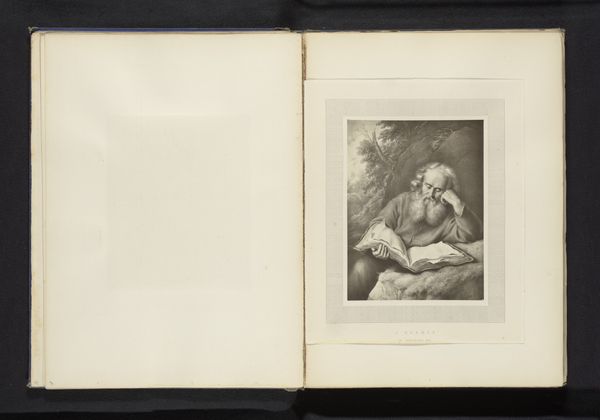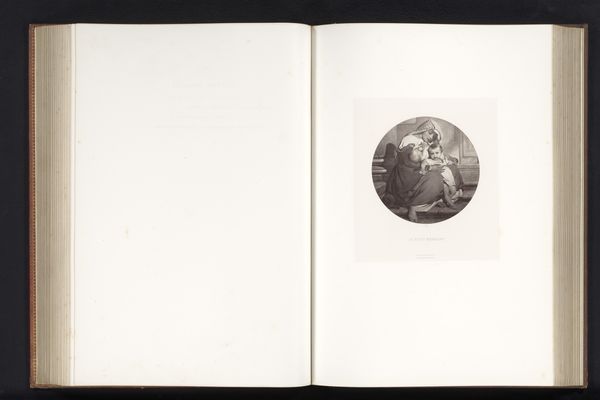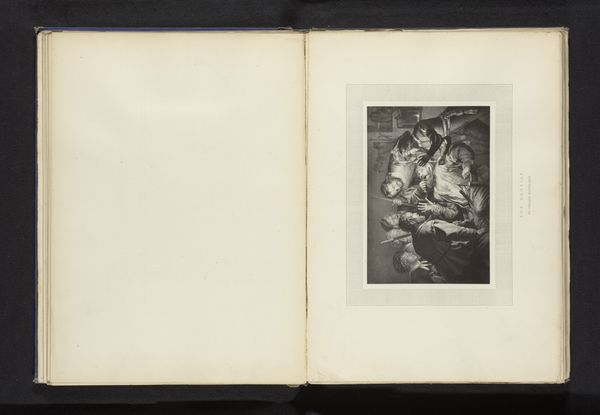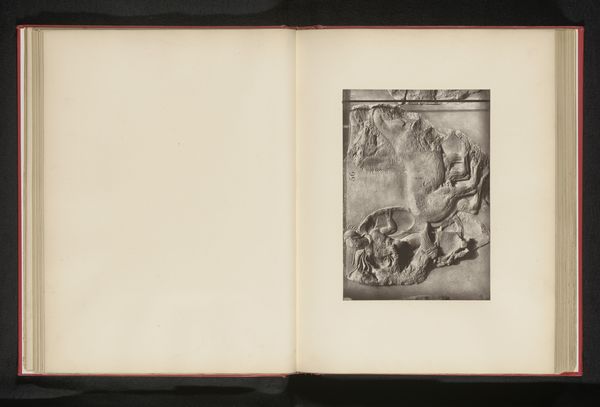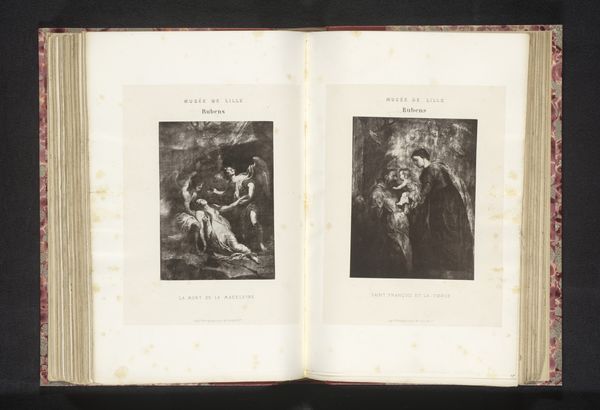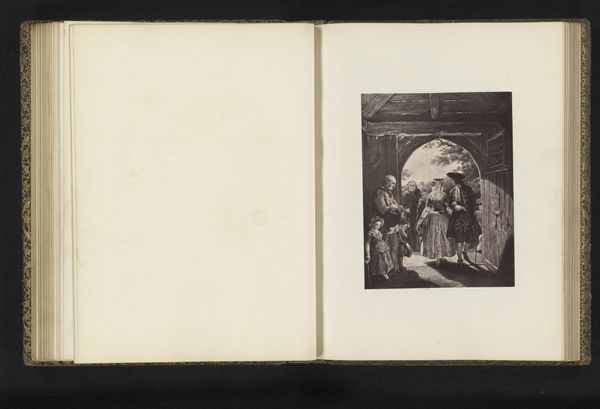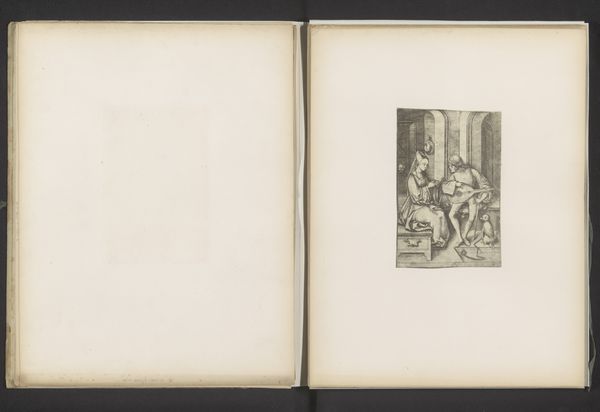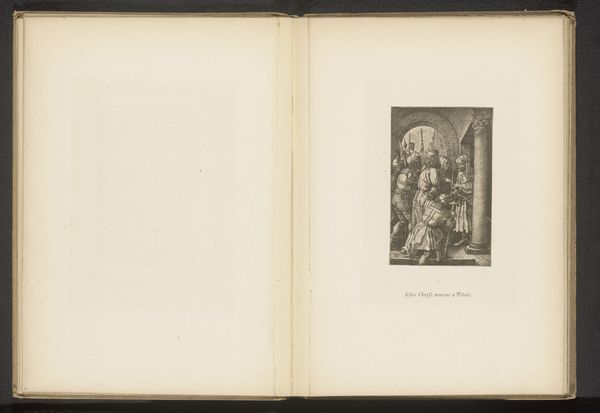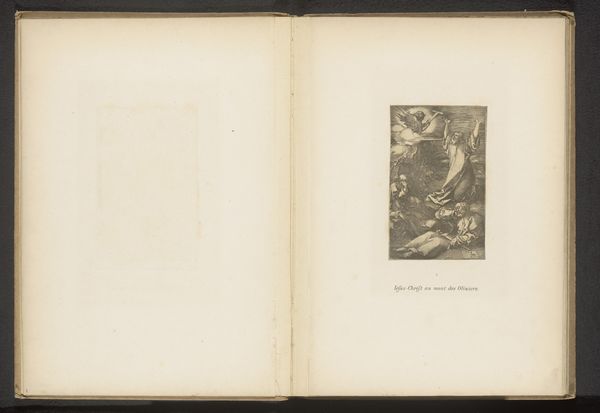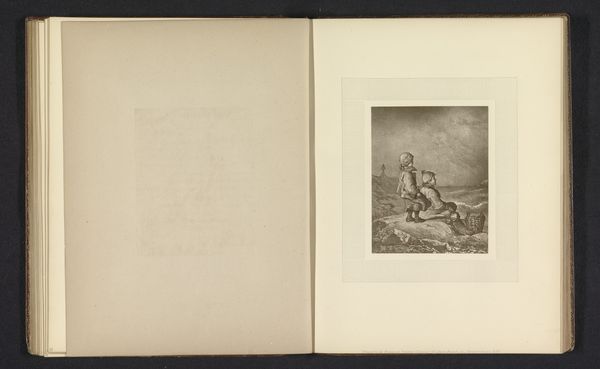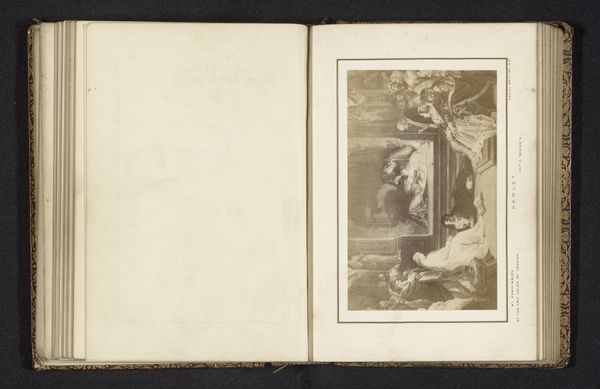
Fotoreproductie van een schilderij mogelijk door Paolo Veronese, voorstellend een vrouwelijke personificatie van de welsprekendheid before 1872
0:00
0:00
print, paper, engraving
#
portrait
#
allegory
# print
#
paper
#
academic-art
#
engraving
Dimensions: height 94 mm, width 94 mm
Copyright: Rijks Museum: Open Domain
Curator: Here we have a photographic reproduction of what's thought to be a painting by Paolo Veronese, created before 1872. It’s titled "Fotoreproductie van een schilderij mogelijk door Paolo Veronese, voorstellend een vrouwelijke personificatie van de welsprekendheid," which translates to a female personification of eloquence. The reproduction itself is a print on paper, using an engraving technique. Editor: Eloquence, huh? Immediately, I'm drawn to the posture. Very theatrical, wouldn't you say? Sort of commanding. Like she’s about to deliver a powerful speech... maybe even sing an aria? Curator: Absolutely. It’s part of a larger book. Examining the binding, you can tell it’s intended to make classic art accessible through reproduction, a function reflecting burgeoning access to both image and information. Editor: It strikes me that we are twice removed from the original, yes? First a painting, then rendered via photography and engraving into a book, and *then* witnessed as this digital file on a contemporary screen? That layers something over the already heady concept of eloquence...a layer of longing. Curator: Right, the materiality impacts everything. Paper and print democratize Veronese. Rather than frescoes accessible only to a wealthy patron class, the masses can turn to pages and absorb these classic allegories as easily handled and consumed objects. Editor: It does seem curious—this presentation of "eloquence." It feels almost contradictory. There’s something about capturing such a dynamic, fluid concept within these static mediums… the black and white tones against the book’s stiff paper is melancholic, but perhaps intentionally ironic. Are we suggesting that it cannot *be* possessed or bottled? Curator: Maybe the goal here isn’t so much to capture it as it is to categorize, understand, and teach—eloquence presented as an accessible and knowable commodity for the upwardly mobile intellectual class. It’s about claiming that cultural knowledge is within reach. Editor: A printed memory… so far removed from its birth that we now can muse at *that* act, as we consume and re-present it in our now entirely digitized form. Beautiful, thank you.
Comments
No comments
Be the first to comment and join the conversation on the ultimate creative platform.
